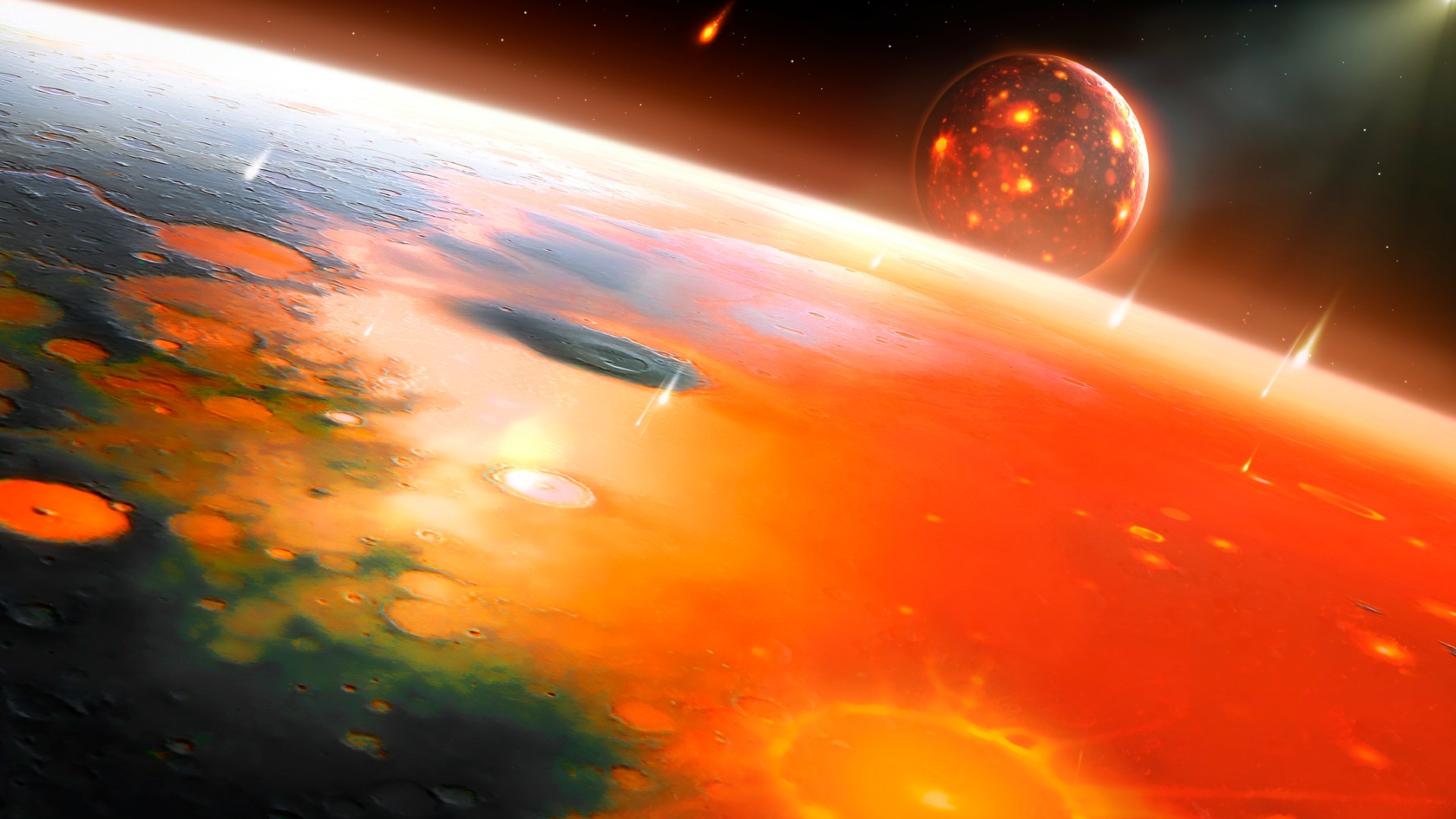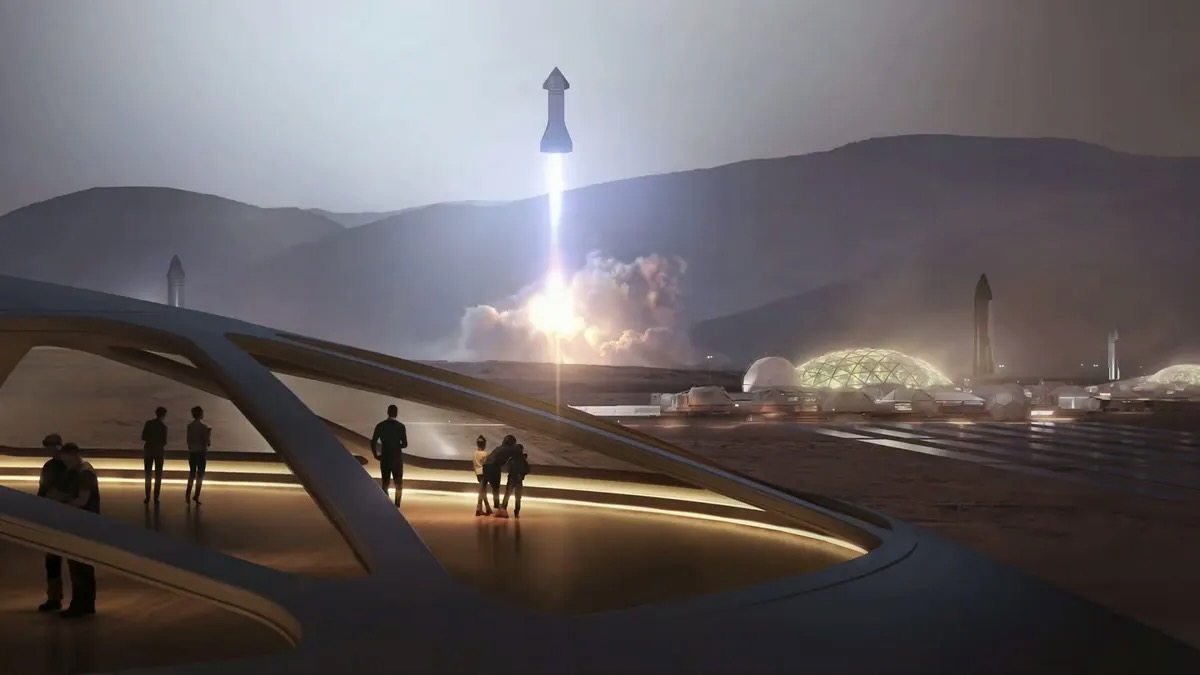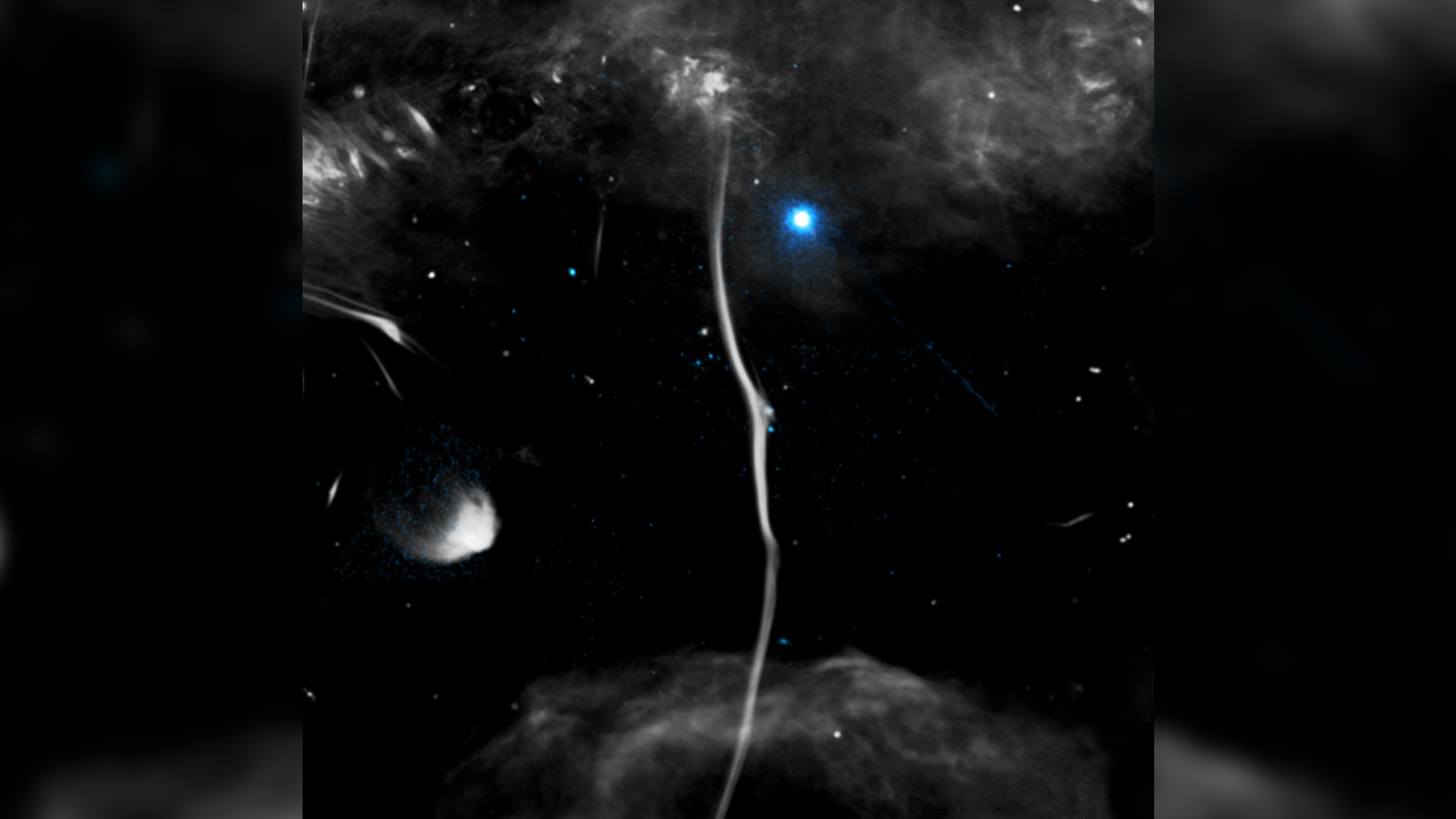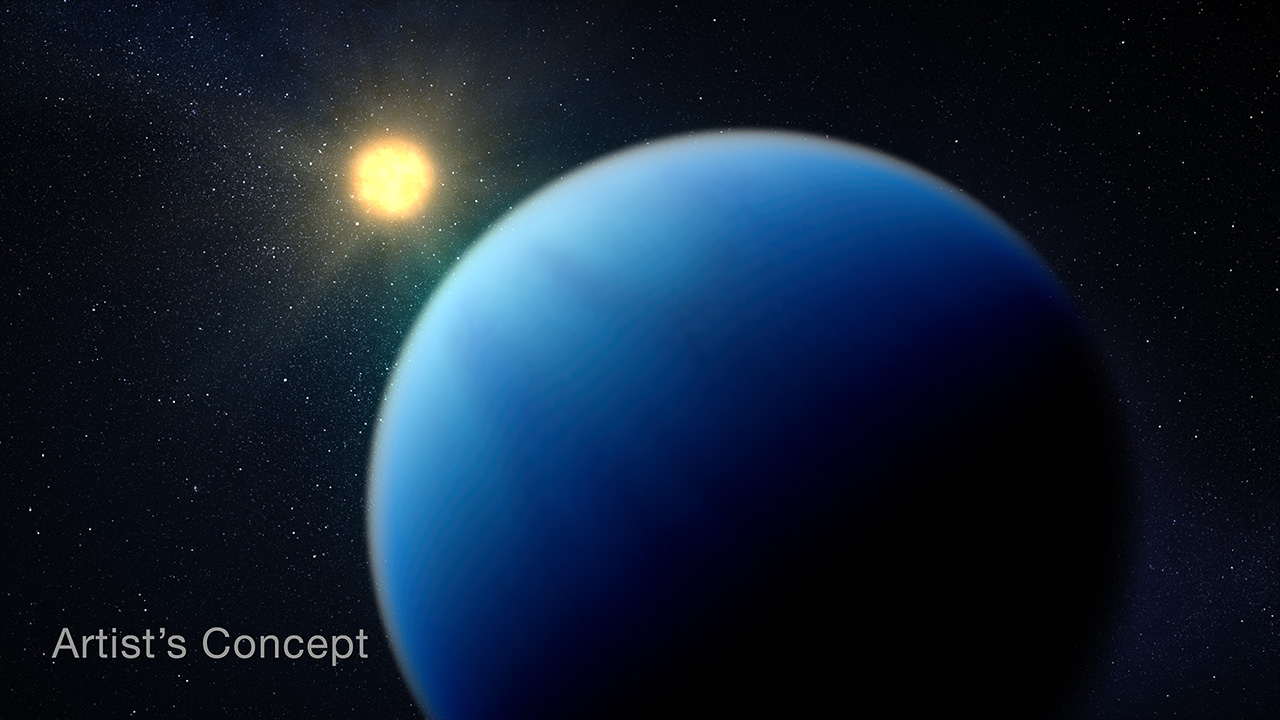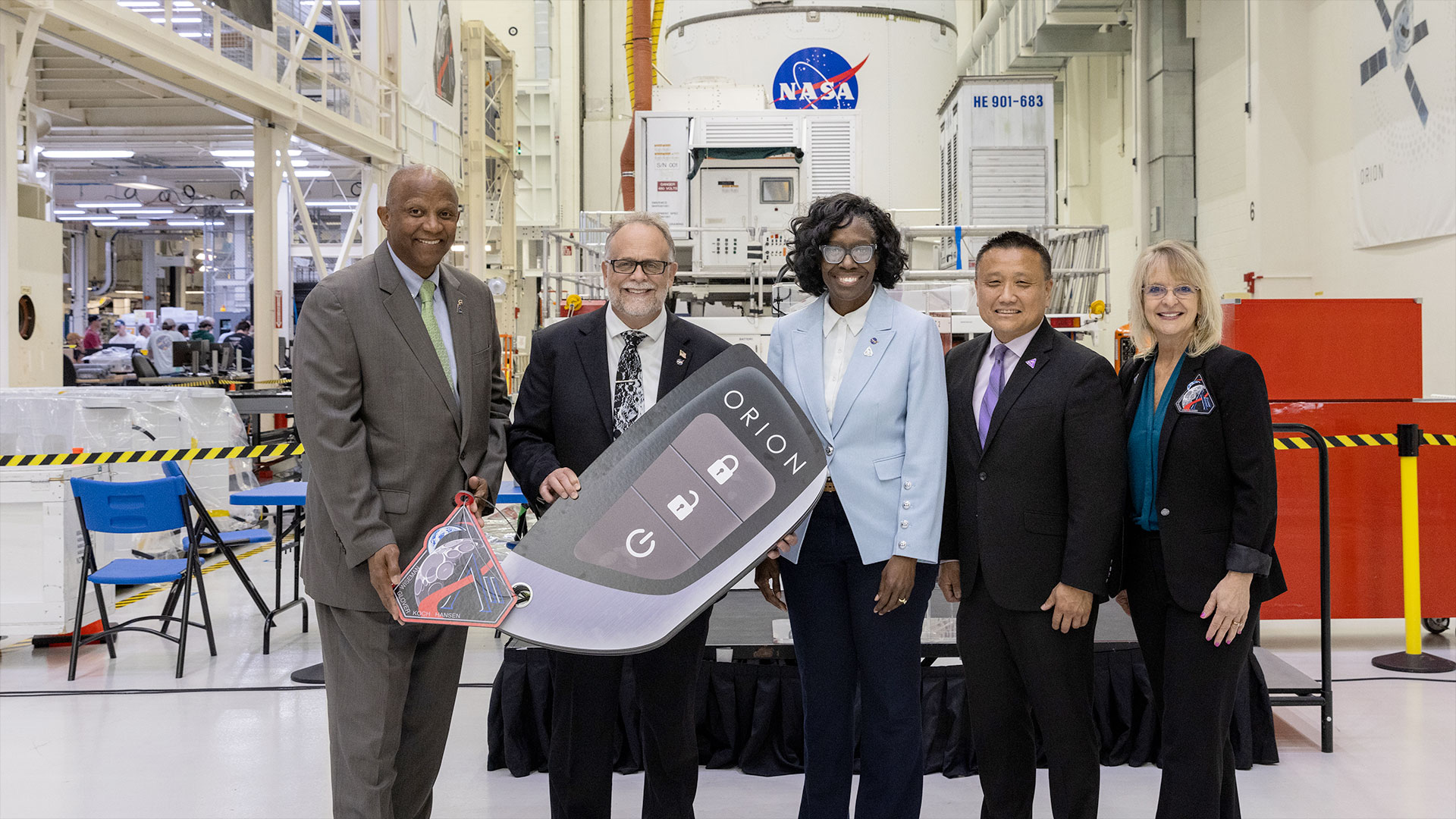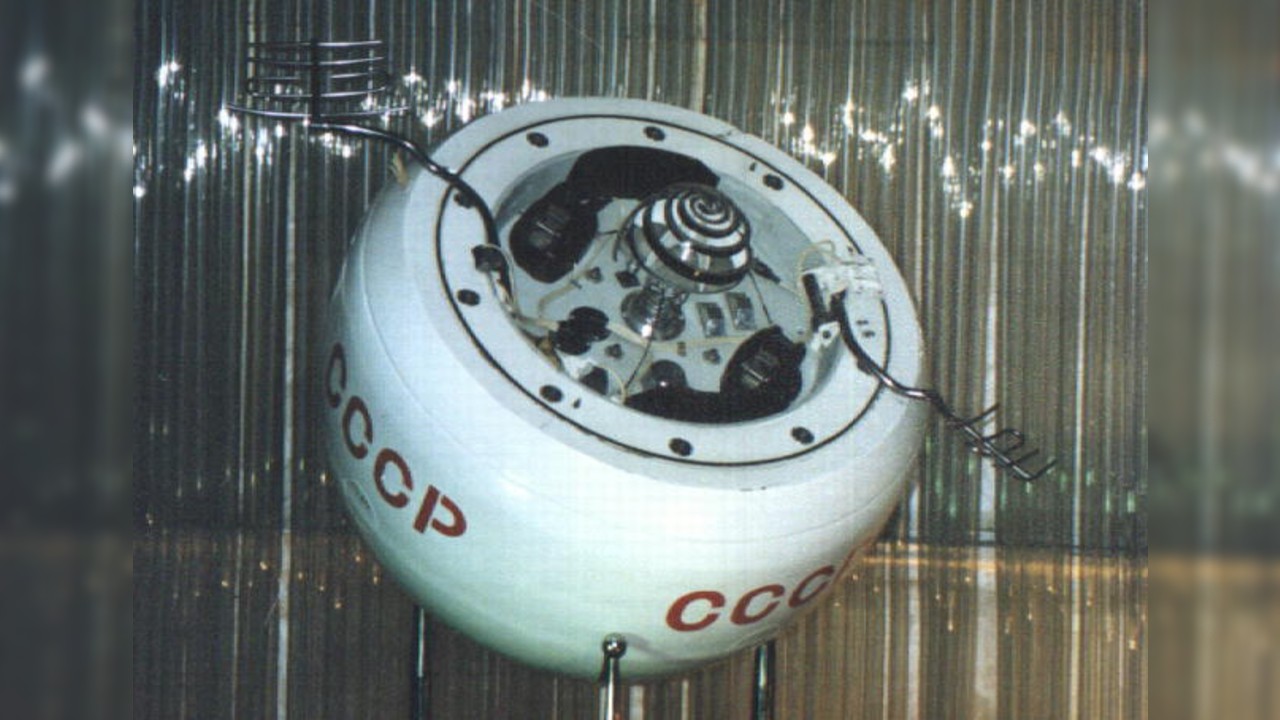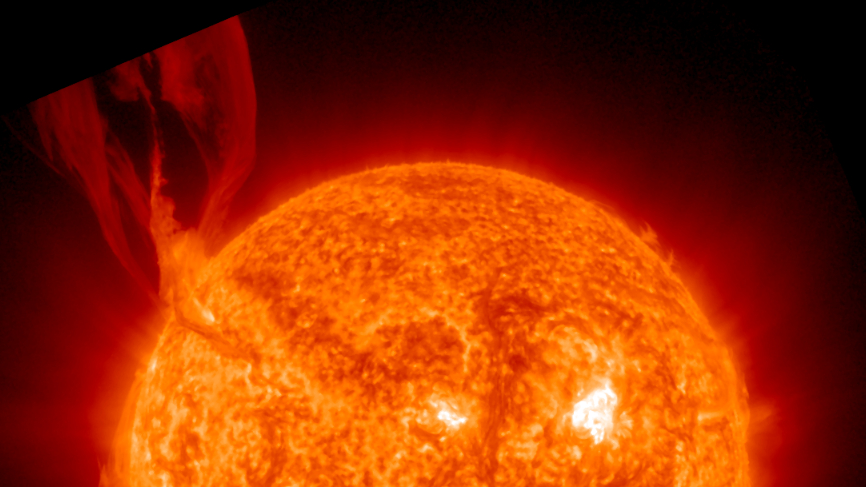NASA's Last Shuttle External Tank to Cross Oceans, L.A. Streets for Display

NASA's last surviving external tank built to launch the space shuttle is about to embark on its final mission, but instead of rocketing to orbit, the fuel tank will travel by road and ocean to join a retired orbiter on display.
The California Science Center, which last May announced it was receiving NASA's External Tank 94 (ET-94) to mate with the space shuttle Endeavour for a new vertical launch pad-like exhibit to open in 2019, has now set the route and dates for the orange-brown tank's move from New Orleans to Los Angeles.
The journey, which will see the external tank pass through the Panama Canal and navigate the streets of L.A., comes almost three and a half years after Endeavour arrived atop a NASA jumbo jet and completed a similar road trip to the Science Center. [NASA's Space Shuttle Program In Pictures: A Tribute]
"It is another really significant move and it is another really significant piece of the shuttle," Jeff Rudolph, the Science Center's president and CEO, said in an exclusive interview with collectSPACE. "It's an incredibly historic artifact, being the last of its kind."
Over the course of the 135-mission, 30-year space shuttle program, 136 flight-qualified external tanks were produced at the Michoud Assembly Facility in Louisiana. Just one of those tanks, number 94, wasn't launched and so still exists today to be put on display.
First though, ET-94 needs to be transported the more than 5,000 miles (8,000 km) from LA to L.A.
Sea launch
The 154-foot-long by 32-foot-wide (47 by 10 meter) tank is presently at Michoud, located just outside of New Orleans. It is from that facility, where NASA is now assembling parts for its new heavylift rocket, the Space Launch System, that ET-94 will be loaded on a barge for the ocean segment of its journey.
Get the Space.com Newsletter
Breaking space news, the latest updates on rocket launches, skywatching events and more!
Emmert International, an engineering and logistics firm, is overseeing the ET-94 move.
"The tank will be loaded onto a flat-deck commercial barge on April 10 or 11 and depart Michoud on April 12, weather permitting" said Dennis Jenkins, a former shuttle engineer who is now the California Science Center's project director for Endeavour's display.
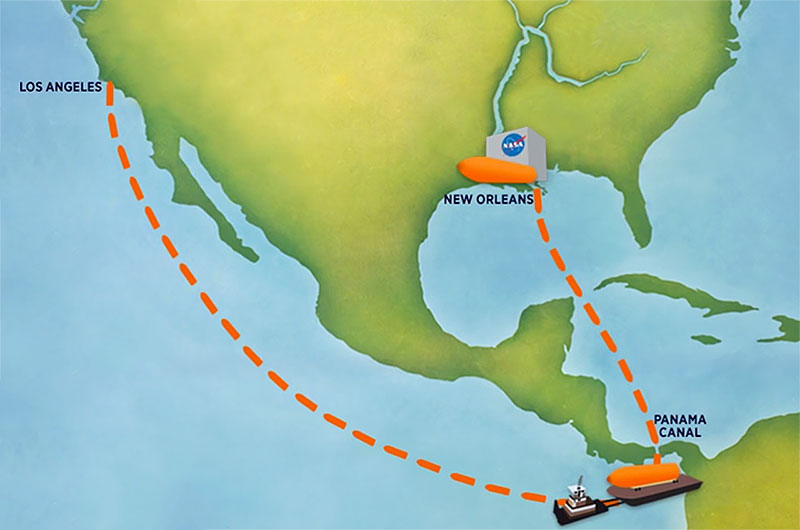
If ET-94 does launch on April 12, its departure will coincide with the 35th anniversary of the first space shuttle mission, STS-1, in 1981.
Passing from a river to an ocean tug boat later that same day, the tank will begin its slow tow to the Panama Canal. Traveling at 6 knots, it will take about two weeks to reach the passing from the Atlantic to Pacific Ocean.
"Current plans are to go through the canal during the week of April 25, but the exact dates are still being worked," said Jenkins, who noted that the crossings are for the most part first-come, first-served and so it can take a few days just to get a slot.
Assuming the canal transit proceeds as planned and the weather cooperates, ET-94 will arrive in San Diego during the week of May 9. There, it will wait another week prior to leaving for Marina del Rey, where it will be brought ashore on May 19. [Shuttle Endeavour Soars Into Calif. Skies (Video)]
Dance until the ET comes home
ET-94's landing will be celebrated at the California Science Center's 18th annual Discovery Ball, which will be held on Friday, May 20 at the marina.
"We thought that this was a great opportunity to essentially welcome ET-94 to Los Angeles and see it on its way," said Rudolph. "We are looking forward to a great Discovery Ball that will pick up some themes from the shuttle, but with the ET there as a backdrop, also from the tank's journey."
"In the New Orleans' tradition, we want to give guests the chance to join in a 'second line' following ET-94 as it starts on its journey. It should be really fun," he said, adding that the black tie dress code for the evening might be amended to substitute sneakers for shoes for those guests who want to walk along with the tank.
In October 2012, it took Endeavour three days and three nights to carefully travel the 12 mile (19 km) distance from Los Angeles International Airport to the California Science Center's Samuel Oschin Display Pavilion. ET-94's road trip will cover 3.5 more miles (5.6 km) but will be done in the course of a day (13 to 18 hours) on Saturday, May 21.
"It is bigger than Endeavour but much easier to move as it does not have wings or a vertical stabilizer," Rudolph said. "The wings were really the challenge and the desire on our part to save every possible tree. With the external tank, we really do not have that problem because there is nowhere in the route where trees are in the way."
Those trees and the need to replant so many of them was largely why Endeavour's move cost about $10 million more than the $5 million needed to move ET-94, said Rudolph.
Leaving the Marina del Ray parking lot atop dollies towed by a custom-built Mack truck, ET-94's route will follow Fiji Way to Lincoln Boulevard to Mindanao Way. From there, it will take California State Route 90 (CA-90) to Culver Blvd., back to Lincoln and then onto Loyola Boulevard.
Turning onto Westchester Parkway, which turns into Arbor Vitae Street at Airport Boulevard, the tank will then take La Brea Avenue to Manchester Boulevard. From there, ET-94 will take Vermont Avenue to Martin Luther King Boulevard to Exposition Park, where the Science Center is located.
Continue reading at collectSPACE to learn what will happen with ET-94 after it arrives at the California Science Center.
Follow collectSPACE.com on Facebook and on Twitter at @collectSPACE. Copyright 2016 collectSPACE.com. All rights reserved.
Join our Space Forums to keep talking space on the latest missions, night sky and more! And if you have a news tip, correction or comment, let us know at: community@space.com.

Robert Pearlman is a space historian, journalist and the founder and editor of collectSPACE.com, a daily news publication and community devoted to space history with a particular focus on how and where space exploration intersects with pop culture. Pearlman is also a contributing writer for Space.com and co-author of "Space Stations: The Art, Science, and Reality of Working in Space” published by Smithsonian Books in 2018.In 2009, he was inducted into the U.S. Space Camp Hall of Fame in Huntsville, Alabama. In 2021, he was honored by the American Astronautical Society with the Ordway Award for Sustained Excellence in Spaceflight History. In 2023, the National Space Club Florida Committee recognized Pearlman with the Kolcum News and Communications Award for excellence in telling the space story along the Space Coast and throughout the world.

